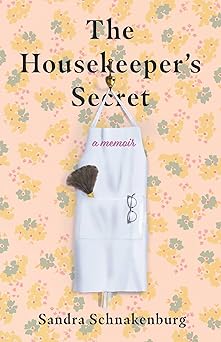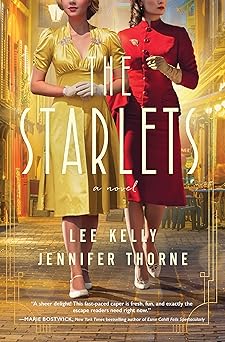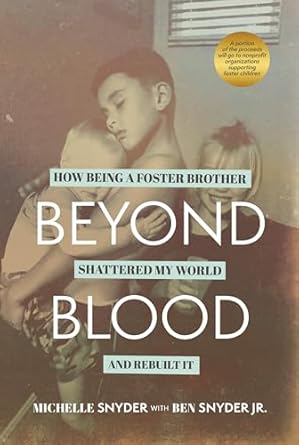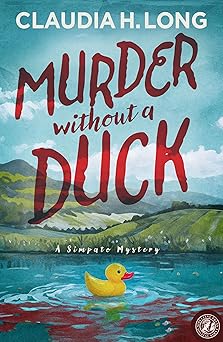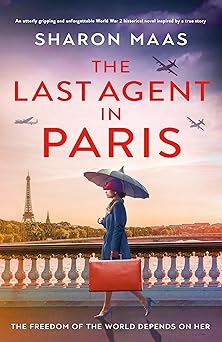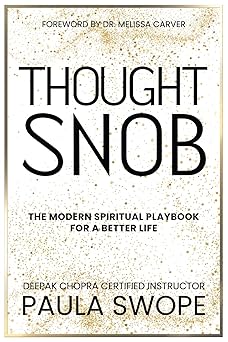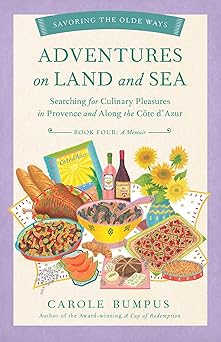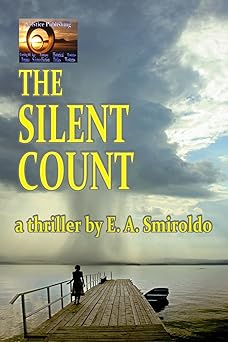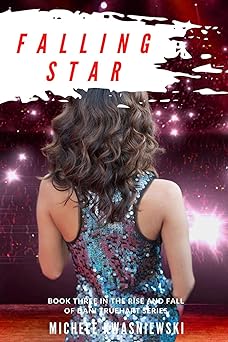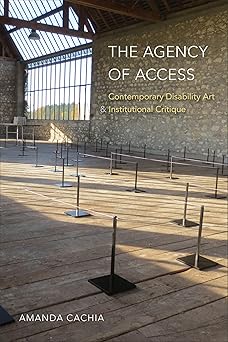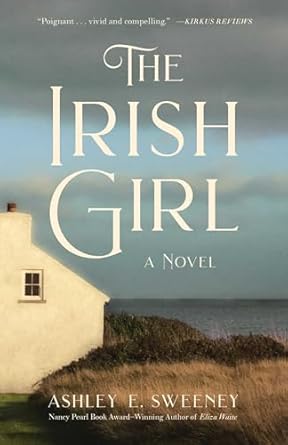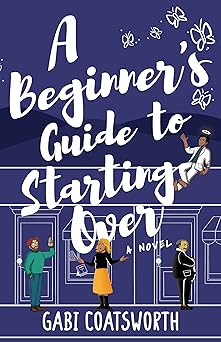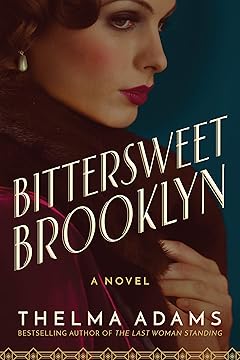How I Wrote a Plant Book to Help People Be Happier
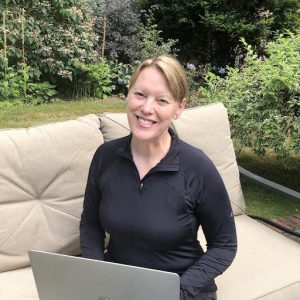 How I Wrote a Plant Book to Help People Be Happier
How I Wrote a Plant Book to Help People Be Happier
By Karen Hugg
When I worked as a gardener, my happiest moments came when my clients stepped outside to look at my finished work. One wonderful woman would squeal and jump up and down and clap her hands. She often said, “Oh, I’m so glad. This garden is my happy place.”
She wasn’t alone. During my almost 20 years of gardening professionally, I heard that again and again. And I saw the joy on people’s faces. The light in their eyes. They loved not just that I’d designed, planted, or tidied their yard, but that they had their own sanctuary from which to escape day-to-day stress.
I knew the feeling because I had my own garden sanctuary (albeit a messy one). After a while, I began to wonder whether folks who didn’t have a garden could still somehow have a “happy place” through plants. What would that look like? How would an apartment dweller approach that? Or someone in a wheelchair? Someday, I thought, I might explore that in a book.
Meanwhile, new studies about how plants boosted people’s mental and physical health flashed through my news feeds every day. The most famous study came from Japanese researchers who found a long walk in the forest drastically reduced people’s blood pressure and raised their cancer-fighting cells. Another study confirmed people recovered in hospitals more quickly when facing a window with greenery outside. Another found fiddling with a houseplant quickly refreshed workers’ brain fatigue.
And the studies kept coming: research from universities in Asia, the U.S., Europe, and Australia. So much so that I wanted to spread the word. How exciting. And how ridiculous that all it took to boost health was plants. Plants were free! But alas, I was a fiction writer and knew little about writing nonfiction, so I shelved the idea of a book.
Until the pandemic hit. Confined to lockdown and coming off being unable to sell my last novel, I myself had gone to work in my garden for refuge. With the loss of a stepdad, pets, and sad peripheral experiences, I felt down and lost for months. Then a close friend called. She was going through a book coaching program and wondered if I wanted to work with her on “that book about plants and mental health.”
“Sure,” I said. “God knows I have nothing else going on.”
Since my friend was a book editor, she helped me get started. Every week, she gave me the homework of brainstorming, journaling, mapping out ideas, and brainstorming some more. She asked tough questions by phone every Friday and we talked for hours. Then I’d take a walk, feeling overwhelmed by the topic, struggling to pinpoint my focus and message. Oftentimes, I’d think, maybe I wasn’t meant to write nonfiction after all. I mean, I wasn’t really qualified. Who was I to try anyway?
Calmly, she’d say, “You’re more than qualified. In nonfiction, it’s the reader who takes the journey. You just need to figure that part out.”
For a couple weeks after, I did a lot of pacing and talking to myself. I worried. I fretted. I felt like I’d lost sight of the mission. Why was I even writing this book?
And that was key. The why. I’d been focused on the plant part and needed to focus on the people part. When I did, I got the why: because I’d made people happy through gardening. I needed to explore those experiences. Relive the emotions and interactions. So I channeled my gardener self and wrote a bunch in my journal. Once I did that, I circled ‘round to my initial urge to make people who didn’t have gardens happier, which led to a breakthrough.
In no time, I had my mission statement and a short summary. I even had a draft of the book’s structure. It would focus on the seven essential ingredients that researchers found made people happy: learning, mindfulness, gratitude, and all else. With a little fiddling, I got those elements to spell out the word “leisure,” so people could more easily remember and apply them to their lives. Then I added plants to the mix and came up with the concept of “green leisure.”
When I sent my package with my “green leisure” theory to my friend, she said, “This looks strong. I like the ‘leisure’ acronym. How does it feel for you?”
“Fantastic,” I said. “I think I can actually help people become happier through plants!”
She laughed. “You will! It’s going to be awesome.”
It’s funny how when the energy of a project is right, the universe aligns to help you. Though we’d planned on querying at least 50 agents before selling the book, the fourth one I contacted offered me a contract. For years, I’d queried dozens of agents and had published novels through small presses without representation and boom, here was that one ‘yes.’ A month later, my agent sold the book. We were on our way to helping the world.
What I’ve learned is not only to not give up hope, which you hear a lot, but not to give up on yourself. I now believe that sometimes it’s that one book in the back of your head that you’ve been reluctant to write that can change everything. What speaks to you but you might not want to hear. What you’re resistant to. When you hear that voice, don’t ignore it. Embrace it. You never know how it might shift your energy toward the positive and help others. And that makes everyone happier!
***
Karen Hugg writes fiction and nonfiction books inspired by plants. Born and raised in Chicago, she moved to Seattle and worked as a content editor in tech before becoming a certified ornamental horticulturalist and master pruner. She earned her MFA from Goddard College and is the author of Song of the Tree Hollow, The Forgetting Flower, Harvesting the Sky, and The Dark Petals of Provence (Woodhall Press). Her first nonfiction book, Leaf Your Troubles Behind: How to Destress and Grow Happiness through Plants (Prometheus Books), is available now. Her short work has appeared in Thrive Global, Crime Reads, The Big Thrill, and other publications. To get more info, visit www.karenhugg.com.
LEAF YOUR TROUBLES BEHIND: HOW TO DESTRESS AND GROW HAPPINESS THROUGH PLANTS
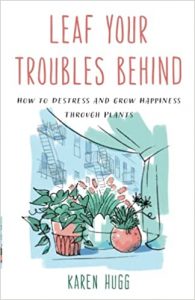 Have you ever felt happier after a walk in the woods or fiddling with houseplants but your hectic life stressed you out again? In our rushed, tech-based, indoor society, we may yearn for a break but only manage to get through a noisy day and collapse in bed. Regaining a peaceful mind seems beyond reach. But what if there were easy, low-cost activities to heal the soul? What if we could regularly access tranquility? How would we do that? The answer may be in the simplest, most abundant thing all around us: plants.
Have you ever felt happier after a walk in the woods or fiddling with houseplants but your hectic life stressed you out again? In our rushed, tech-based, indoor society, we may yearn for a break but only manage to get through a noisy day and collapse in bed. Regaining a peaceful mind seems beyond reach. But what if there were easy, low-cost activities to heal the soul? What if we could regularly access tranquility? How would we do that? The answer may be in the simplest, most abundant thing all around us: plants.
Plants are like a magic pill for our mental health. Growing science tells us they lower heart rates, make us more relaxed and productive, boost our immune system, help us live longer, and provide air, food, fragrance, and beauty. In Leaf Your Troubles Behind: How to Destress and Grow Happiness Through Plants, horticulturalist Karen Hugg draws on the science and two decades of professional gardening experience to help readers reduce stress and increase happiness. Through her original, approachable system of “Green Leisure,” you will:
-discover nature’s scientifically proven power to heal us from stress
-explore what “green leisure” activities are right for you
-create a soothing green lounge at home, either via plants or just photos and décor
-gain confidence in growing low-maintenance but rewarding plants, indoors and out
-develop “green leisure” habits to ensure care for your soul any time of year
With personal stories, the latest research, and fun easy-to-do activities, Karen guides readers in delving into the wonders of plants while “leafing” their daily stress behind and growing joy.
BUY HERE
Category: On Writing




